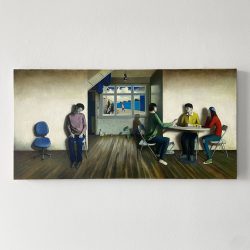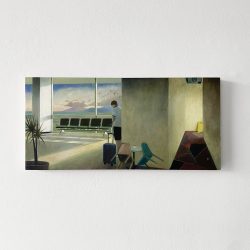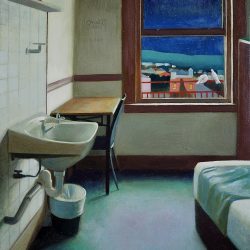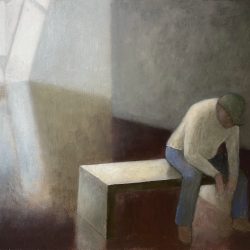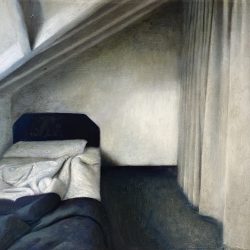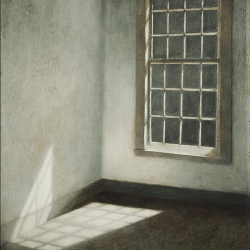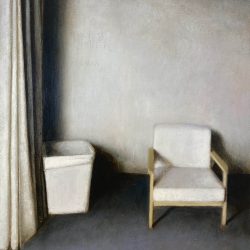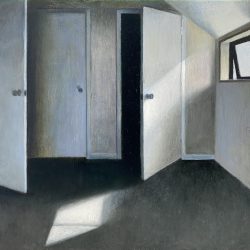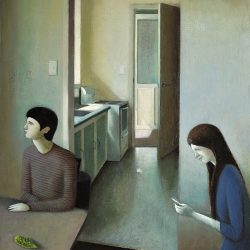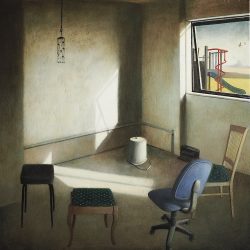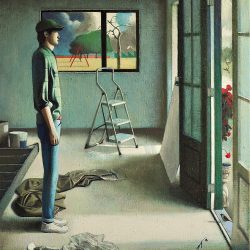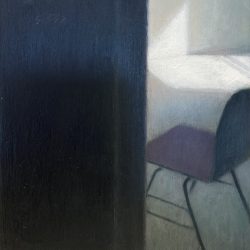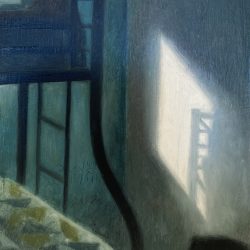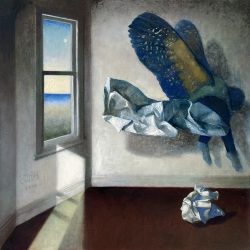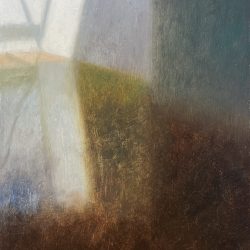Gavin Chai | Interior
Edward Hopper famously said:
“great art is the outward expression of an inner life of the artist, and this inner life will result in his (sic) personal vision of the world.”
This is true on a number of levels for Gavin Chai’s interior paintings. Chai’s mostly empty interiors, set within waiting rooms, food courts, hotels or unassuming domestic environments – are more metaphors for interior life and introspection, than depictions of actual places. Within these intimate works there is always something about their arrangement or narrative content to make external connections to: whether an open door, intruding sunlight or the strangely juxtaposed worlds depicted through windows.
Chai’s focus’ on interior spaces makes reference to the traditions of Dutch & Danish painting from the 17th – 19th Century. His awareness and employment of traditional painting techniques provides an understated elegance to his empty rooms, which display a striking sense of the realistic, abstract, and surreal all at once. Chai’s use of shallow space, high contrast lighting, combined with the theatrical arrangements of objects, infuses the ‘seemingly’ mundane subject matter with sense of subdued drama. For example, in Interior 64 we see a small chess piece stood on an upturned bucket, holding court to a conference of empty chairs, while it’s the simple and purposeful placement of a bitter gourd on the table of Interior 58, and the discrete – almost etched – butterfly of Interior 69, that let’s us know there is more going on here.
The quiet abandon of these humble scenes, along with their restrained tones, creates an uneasy sense of estrangement and isolation. The forlorn figures which sometimes populate these spaces seem disconnected from each other, as well as environments they find themselves in, often gazing passively into the distance. However, this mood and posture is contrasted by the sense of optimism and freedom we see hinted at in the exterior world – either evidently on display through windows or just suggested by the encroaching sunlight, fondly bathing the walls.
Windows feature prominently in Chai’s works, separating the interior from the exterior, and as such, become frames with in a frame, offering partial visions of lush alternative realities and suggestive of other modes of being. Chai’s contemplative interior worlds are highly personal visions of the everyday which reference the historical. as well the psychological and present, while showing small glimpses of utopian dreams and future aspirations.
